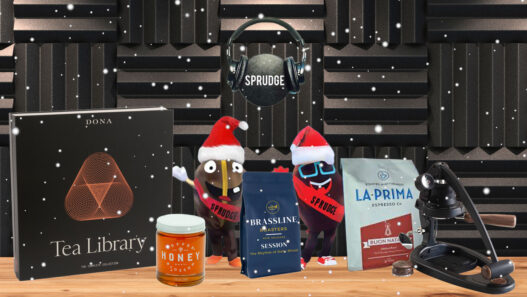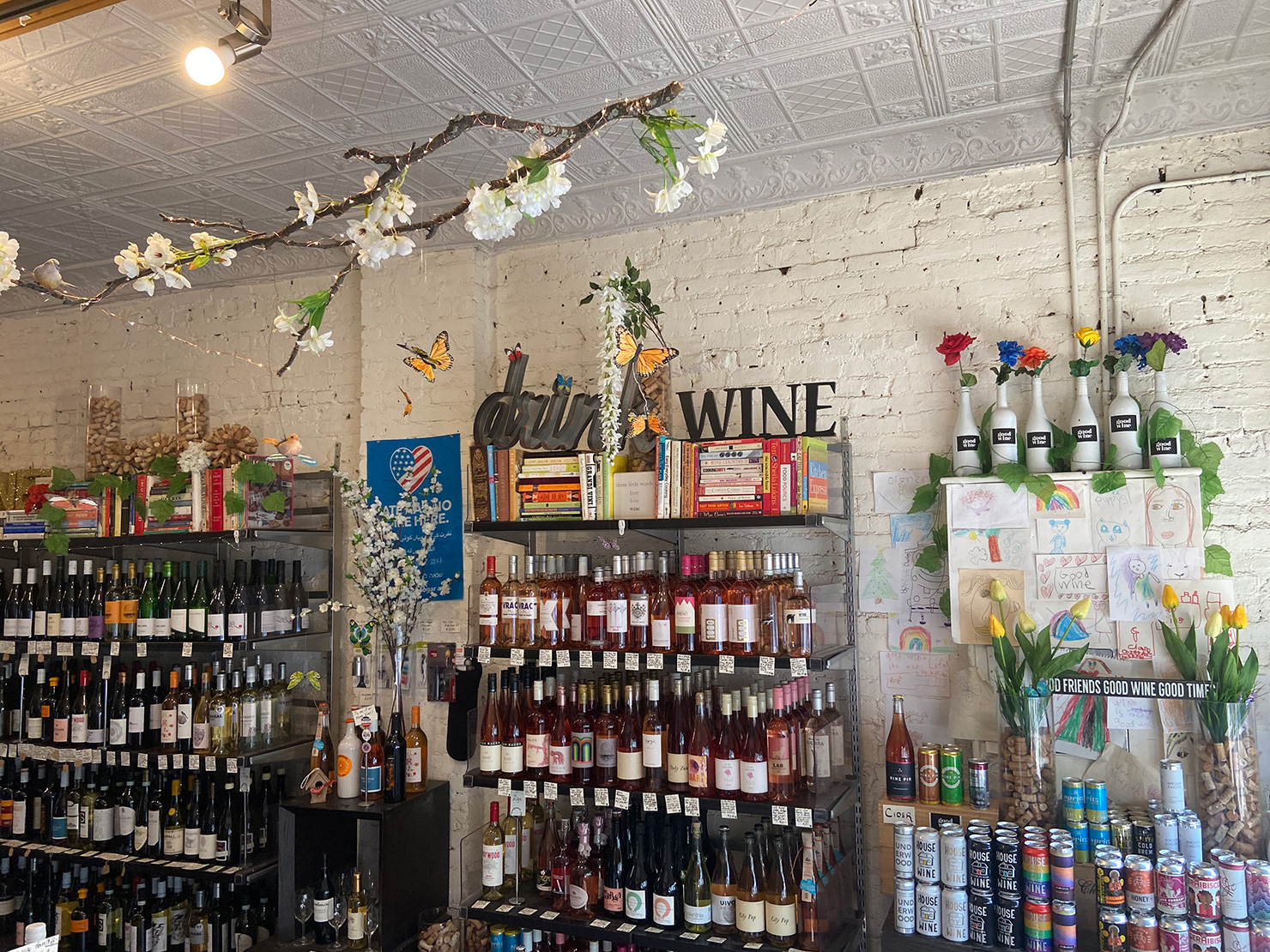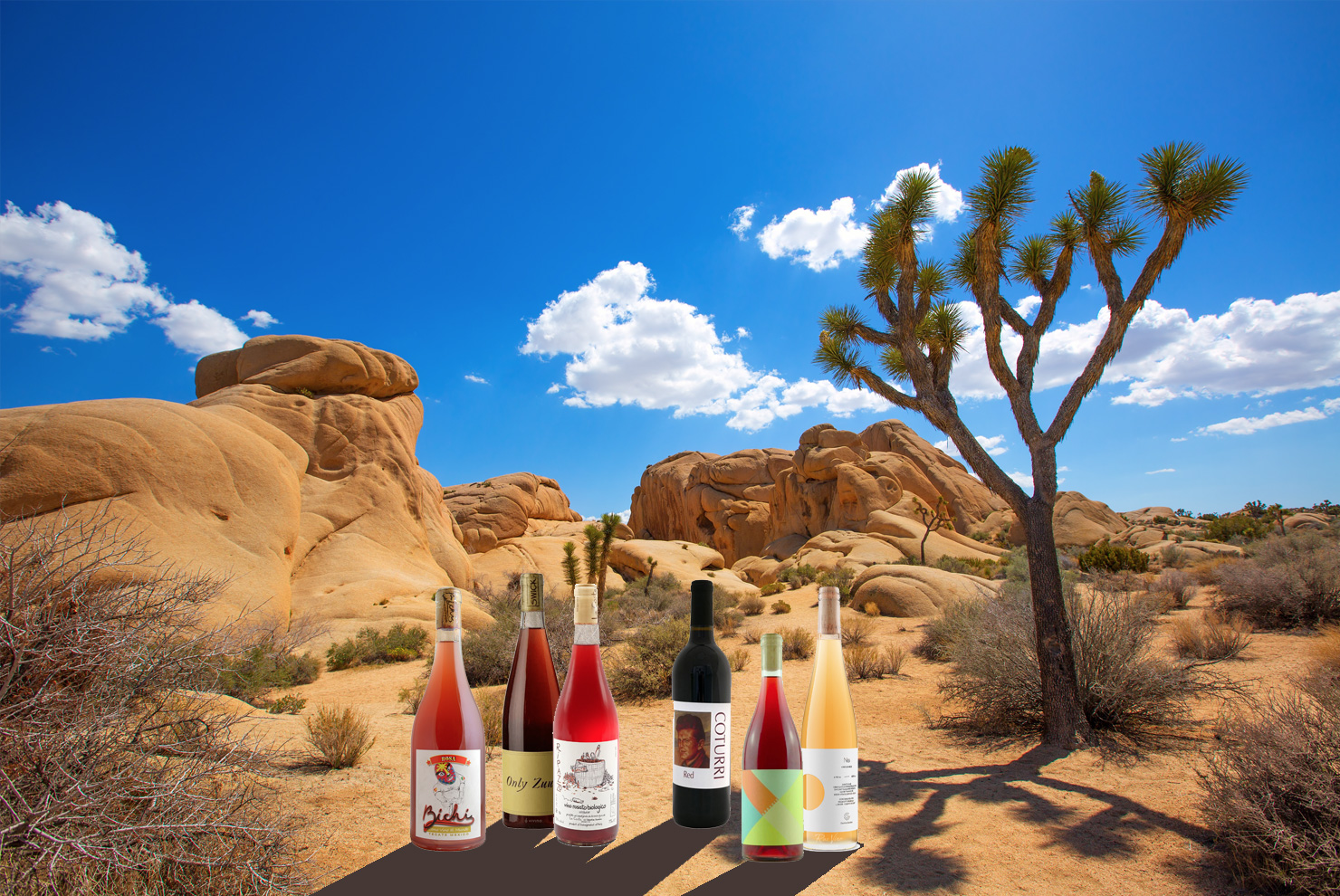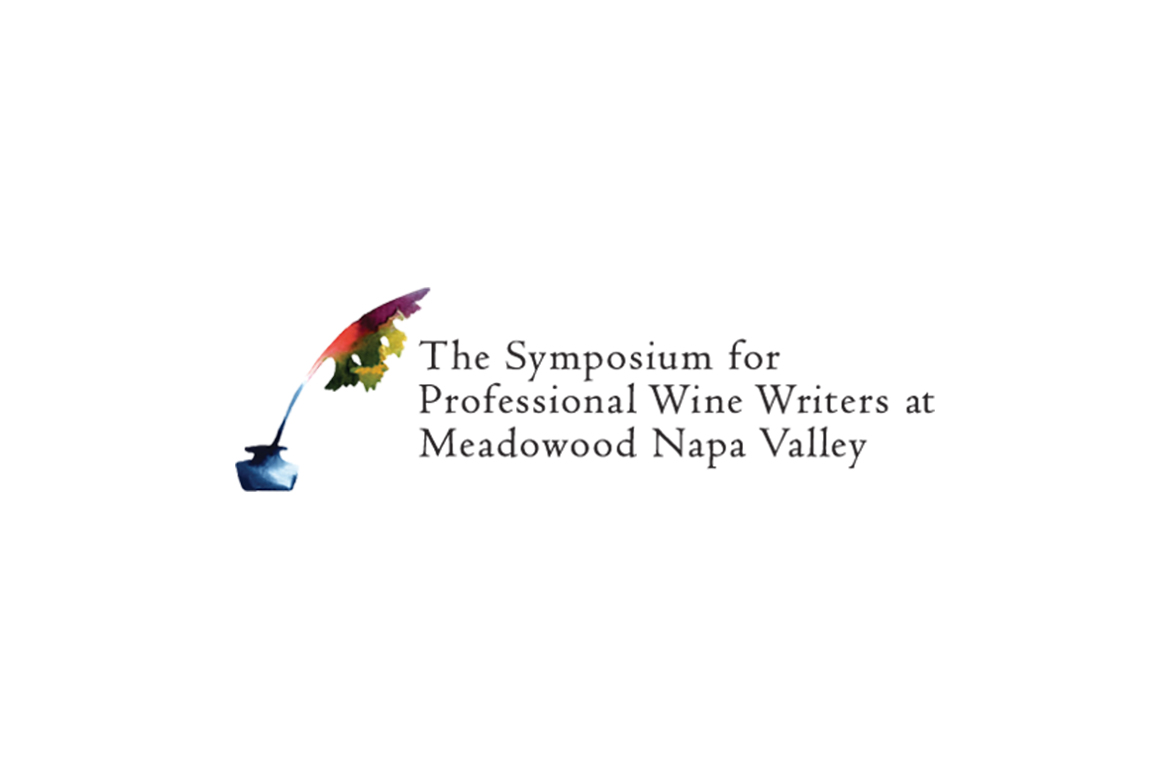Close to four years ago, as I was just starting to dip my toes into the world of minimal intervention wine, I heard a bunch of racket about a wine called “Nouveau”—a Mourvèdre from a fellow called Tom Shobbrook who was making wine in the Barossa Valley of South Australia. Having long associated the Barossa with the heavy, jammy, teeth-staining Shiraz wines of my youth, I was intrigued by the concept of a light, drinkable red wine from the same region, and purchased a bottle of Nouveau quick smart. After that bottle I was fully converted to Shobbrook’s take on the prolific region (alongside more bottles of that same wine, and many more of his other wines over the years), so it was only logical that after all these years I finally go talk to the man himself in depth, to find out more about his philosophy and wine style.
It was an absolutely sweltering day in the Barossa Valley as I made my way to Shobbrook’s winery. Heading into the driveway, vines fan out towards the left, while his winery—with three huge concrete fermenters out the front—sits neatly next to his parent’s house. Having spent a number of years in Italy making wine before coming back to Australia to start up his own winemaking business, Shobbrook’s practices are a result of his time overseas combined with his own experiences on the land and in the winery in South Australia.


Shobbrook’s knowledge of the regions, the soils, and the history of each vineyard borders on encyclopedic, with a simple tasting of Chenin Blanc leading to an in-depth history of the age of the vines (about 45 years old, because the grower remembered planting it with his dad), or of the Riesling (it was planted in 1983 by Shobbrook and his mum, in a little paddock surrounded by sheep—from a clone of grapes sourced from Colin Forbes, who was making Rieslings that were far beyond his years). This level of interest and care clearly translates into Tom Shobbrook’s winemaking style, showing respect to the vines and soils that the grapes come from, and working them into an end product that is beautifully representative of the place and time.
On his own vineyards he works largely organically, having not used sulphur since 2008, and no copper since 2011, favoring instead a spray of carbonised coconut husk. “It makes it harmful for those things to survive [downy mildew, etc]—but it also means we’re not killing beneficiary mites,” he explains. Here on the home estate, he grows Shiraz, Merlot, Mourvèdre (and a tiny amount of Trousseau), with other grapes coming from growers in the area that he’s built connections with and farm similarly.


Heading into Shobbrook’s beautifully insulated winery, you’re immediately met with a jam-packed (but meticulously organised) selection of ceramic eggs and large format timber barrels. The first thing we tasted was his 2016 “Beach” bottling, made from Chenin Blanc. The 2015 version of this wine blew minds at Rootstock [RIP] on the year of its release, full of lovely acidity and minerality but still with a lush character to it. Beach takes its name from the Chenin Blanc’s home soils in Vine Vale, where a layer of fine sandy soil is perched above yellow-orange clay.
After the Chenin Blanc we progressed through his Eden Valley Riesling, to a Grenache Rosé and a Semillon from Vine Vale, all the way to Mourvèdre—a stunning diversity of wine for a region that’s mostly known for just one thing.
Whether you call it Shiraz or Syrah, the grape is synonymous with this Australian wine region. It makes for a tricky topic, one that winemakers like Tom Shobbrook must grapple with on a daily basis, in ways large and small. Some of that is public perception—which can change with education—but the bigger issue has become a lack of viticultural diversity in the Barossa, with many old vine varieties being ripped out in favor of planting new Shiraz, “The South Australian Wine Associations push Shiraz pretty hard, because they’ve spent a lot of money selling Barossa Shiraz to the international market,” Shobbrook tells me. “People ask, ‘Why don’t you have white wine in the Barossa?’ and it’s because they pulled it out to plant more Shiraz.”

Shobbrook makes Shiraz too, but it’s miles from the 15% ABV Parker Point plonk found elsewhere in the region. Instead he chooses to use the Shiraz grape in a variety of different ways that challenge the status quo, making a light and fizzy Shiraz Pet-Nat aptly called “Making Space,” or pressing straight off to create the light rosé colored “Poolside”, an aptly named summertime favorite in the Melbourne and Sydney natural wine scenes. Elsewhere he’s exploring gradations of skin and stalk contact with wines like “Sunday” and “Monday”.
Many of his wines sit in large format oak barrels, with a large percentage of them being made out of Australian timbers rather than the more commonly seen French or Austrian oak barrels. It’s a unique and pointed choice to use these sort of materials, with many of them being salvaged from old fortified wineries—in this case from Stonyfell in Adelaide, where a winery was built in 1860 which housed at least one 15,000-litre Jarrah wood vat. By the time Shobbrook got there, it had already been pulled apart and was being sold in timber packs aimed at furniture businesses, so he used all the money in the bank to purchase a pack and a half which he then repurposed into two freshly-formed 6,000-litre large format Jarrah tanks.
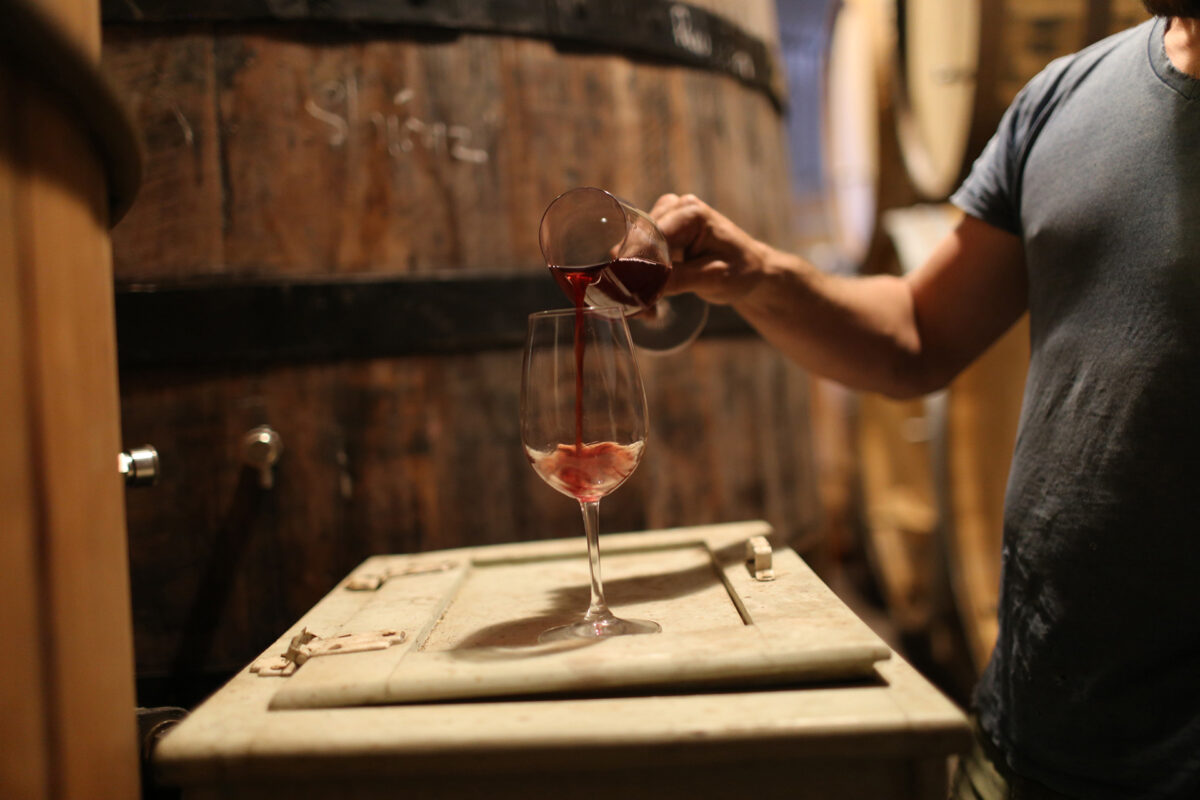
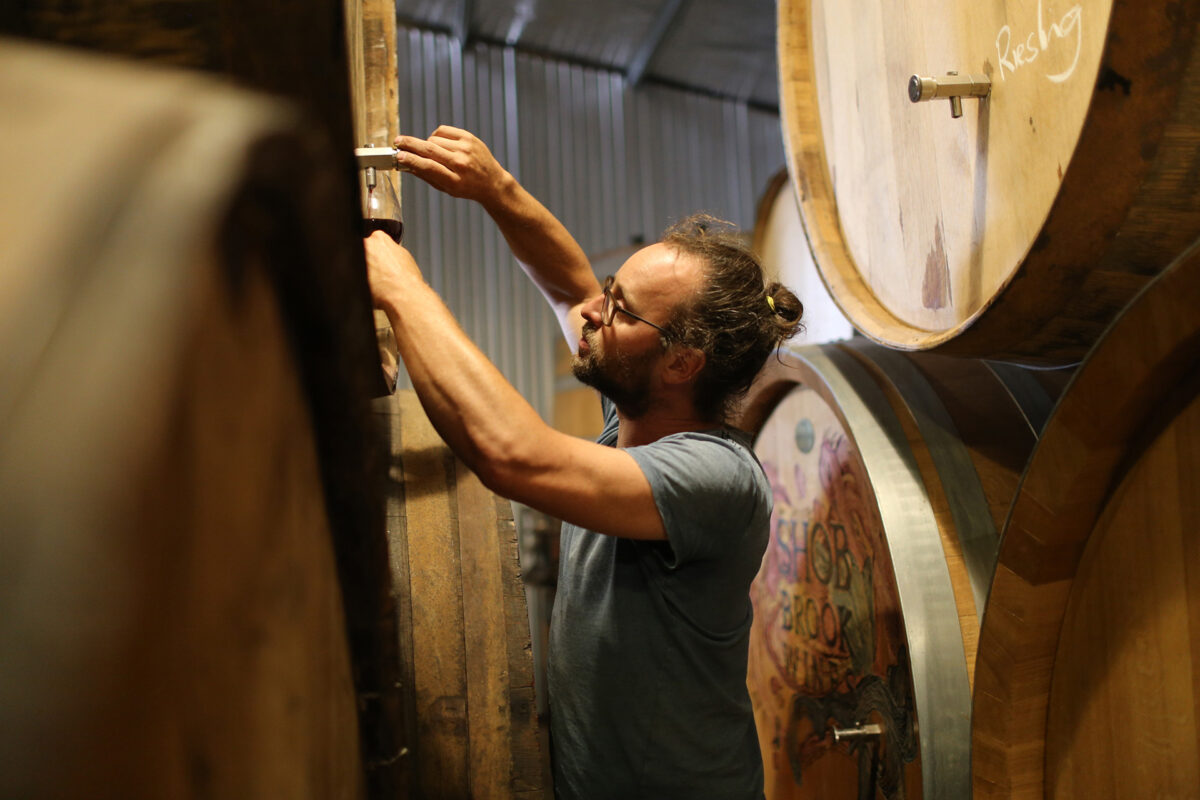
While native Australian timbers are quite highly prized in furniture making in Australia, they are much less commonly used in winemaking these days due to their high sap content and porosity. As Shobbrook outlines, “Jarrah is quite porous as a timber—the way the grain runs and the structure of the cellulose in the timber is very different from oak. Oak, if it’s leaking I can bang it, bruise it, and it’ll soak up and stop the swelling, but Jarrah is a bit different: the wine seems to pass through the Jarrah and breathe more.” It’s a characteristic of the barrel that he finds can potentially work beautifully with some varieties, and he’s starting to experiment with it more.
Seeing all the projects that Shobbrook has on the go, this theme of experimentation seems to run throughout his whole practice. While he has particular wines like Poolside or Nouveau that he makes every year to a relatively fixed end (albeit with vintage variations), he also allows space for the wines themselves to dictate their journey. He never bottles until the wine tastes ready, and makes room for wines to become something new, like a naturally evaporated sherry, or putting some aside to distill into vermouth. While there we tasted the beginnings of a Shiraz sherry which had been slowly evaporating outside for a number of years—it was delicious and complex, completely dry (no sweetness), with a surprising shock of acidity.

For Shobbrook, it’s clear that each wine tells a story, from the person who planted it in which soils (and why), all the way to where the barrel wood originally came from, and what lives it experienced before being formed into a barrel—let alone the growing season, processes, aging, and bottling. “I tend to think of wine like a diary,” he tells me. “It shows a bit of a journey. It’s your time from that year but what you’ve done with your life as well. It shows how you make your wines because of what you’ve tasted or what you’ve seen or where you’ve worked—and that whole journey hopefully shows through the bottles.”








